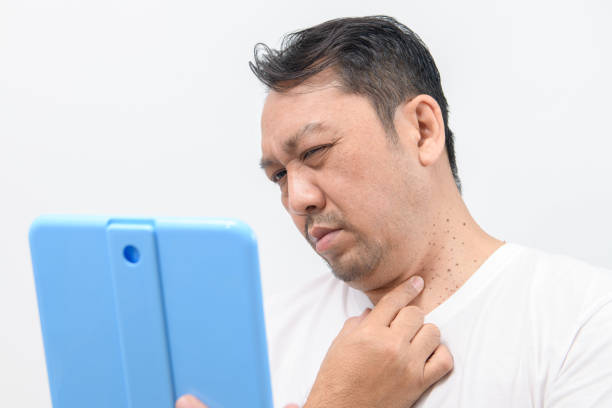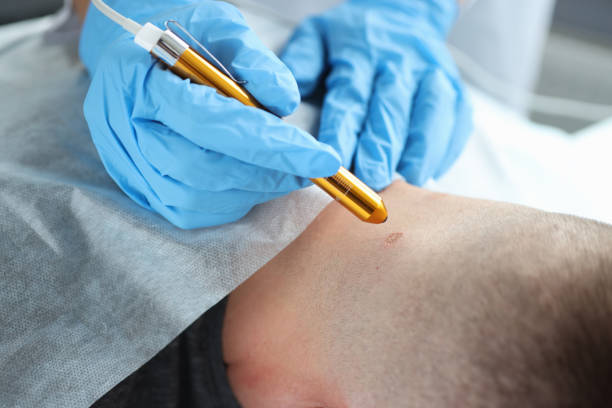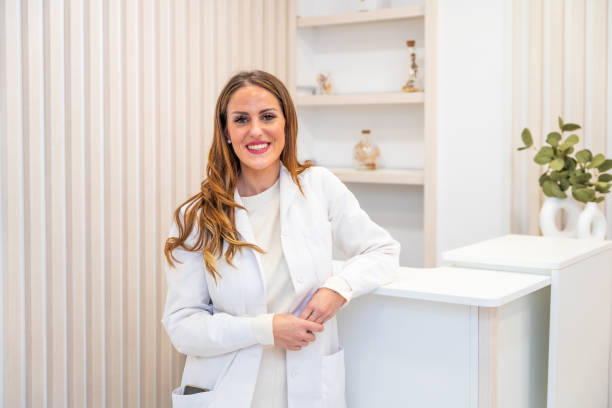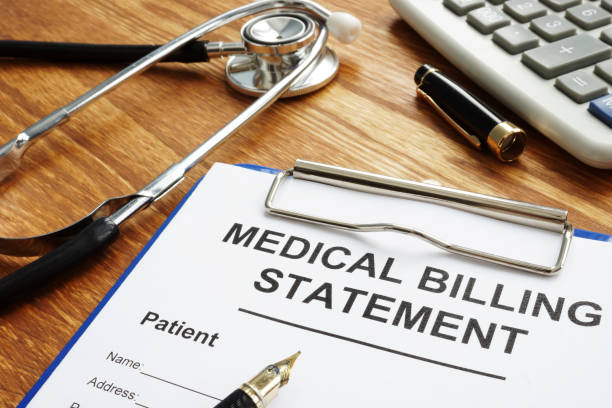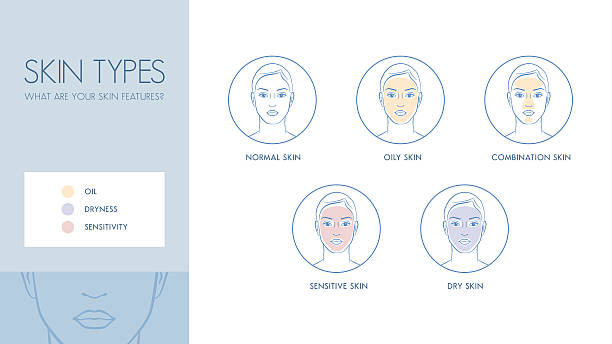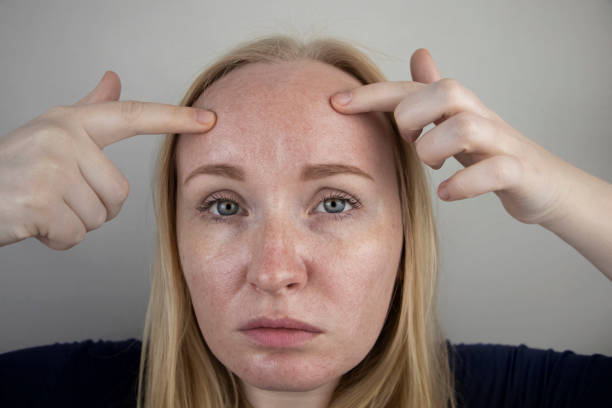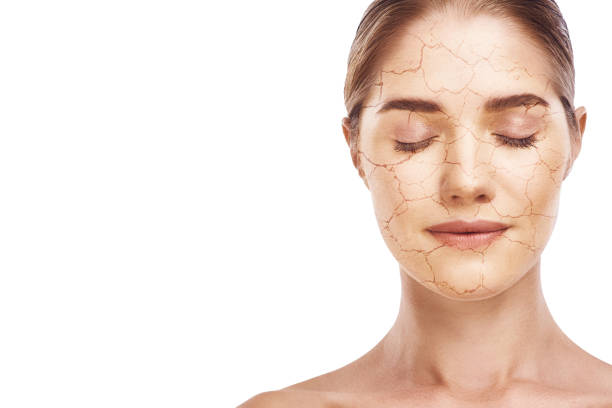Essential Cyst Removal Aftercare Tips for a Smooth & Safe Recovery
Taking out the cyst is standard surgery, and cyst removal aftercare is equally as significant as the operation. Inadequate care after removing a cyst can result in infection, difficulty with healing or leaving a scar. Regardless of your type, now that your cyst has been removed, your skin must be looked after to recover and remain healthy.
Aftercare includes cleaning the wound, but also involves learning about the process, how to manage any pain and what to do to ensure the skin heals well. Depending on the site of your cyst, the aftercare plan could differ for each person.
Along with cyst removal, we advise our patients on caring for their skin. Our advice is personalised, allowing for a quick recovery and healthy skin.
We will advise you on caring for yourself during the first day and over the long run after cyst removal. We will also explain ways to avoid getting more cysts and care for your skin more actively. All set to ensure your skin heals properly? Now, we will explore each step in the post-care process.

What Options of Cyst Removal Aftercare
Proper care after removing your cysts is vital for your skin’s health. If the surgery site is not taken care of properly after removing a cyst, the area can develop infections, become inflamed and scar. Regardless of how simple or complicated your surgery was, your skin should be cared for properly to heal completely.
During the first two days, the situation is the most important. At this stage, bacteria can easily enter the wound if not cleaned and left exposed. Making contact with the wound using your unwashed fingers can also result in delays in healing. For this reason, professionals advise keeping the area clean, dressing it so it does not get dirty and avoiding rubbing the treated site.
Forgetting to take care of your surgical wound can lead to complications.
• It takes longer for the wound to heal
• A painful area accompanied by infection
• Dark and discoloured scars
Often, cysts return if the area where the cyst was detected does not heal completely.
Proper cyst removal aftercare promotes the quick growth of new skin cells, protecting your skin from scars and other issues. This is most important when cysts are removed from the face, back or underarms.
Aftercare also becomes necessary to stop any future issues. If your pores or skin are not properly cared for after a cyst, more cysts may grow in the future. Keep your skin moisturised, stay away from harsh chemicals and use non-comedogenic items after removing your makeup.
Taking care of your skin as recommended helps you achieve the best possible outcome. If a wound is taken care of, it heals quickly, appears nice and reduces the risk of forming cysts later.
Things to Do Immediately After Having a Cyst Removed
You should keep in mind that what you do for the first few hours after your cyst is removed can impact your recovery. Aftercare for cyst removal should begin when you are discharged from the clinic.
1. Ensure that the area is always clean and dry.
As advised by your practitioner, the area treated should be covered with a clean dressing. Don’t get the article wet for at least half a day. If your wound is not dry during bathing, it can take longer to heal, and bacteria could enter the wound.
2. Adhere to the rules for caring for your wound.
Only wash the wound with the suggested antiseptic or saline solution. Do not use alcohol or hydrogen peroxide unless directed, since they may irritate your skin and cause it to heal slowly. Wash your hands before working on the area.
3. Leave your scabs and stitches alone.
Even though it is natural to want to scratch at a healing wound, this might open the wound and create more scars. If your wound is stitched, do not remove the stitches until your next check-up.
4. Be aware of any suspicious activities.
Consult your clinic if you observe pus, extra pain or warmth around the wound. If you seek care for an infection quickly, you may avoid facing complications.
5. Try to do less physical exercise.
If the cyst developed in the back, groin or underarm, do not try to stretch much, overexert yourself during exercise or wear clothing that rubs the area.
These quick cyst removal aftercare tips form the base for skin to heal properly. The idea is to let your skin heal and repair itself in peace and without any disturbance.
Maintaining a Clean Area
Keeping the area clean after surgery is necessary, but avoid intense scrubbing since it could damage the area. If you are gentle during your aftercare, cyst removal will be more effective.
1. Always Stick With Mild Soap
Do not use antibacterial soap for your skin. Pick a cleanser that is fragrance-free and has a pH close to 5. Don’t strip away the natural oils on your skin, as they are helping it heal.
2. Always Pat Dry.
After washing the area, always pat it dry using a clean and soft towel. Massaging the healing skin may disturb it and remove scabs that protect the area.
3. Avoid anything that contains alcohol.
When you use disinfectants with alcohol or strong astringents, they may burn and cause redness. Your practitioner should advise you to try a saline solution or diluted antiseptics.
4. Shifting Dressings Should Be Done Properly
If you still have a covering, change it as directed by the prescribed guidelines. Utilise sterile gauze and medical tape, and ensure your hands are clean before you come in contact with the cut.
5. Practice wisdom and don’t do much in one day.
Too much washing can hinder the process of new tissue formation. Twice a day should be enough, unless your doctor instructs you otherwise.
When gently cleaning your skin after cyst removal, you avoid infection and irritation, so your skin recovers easily and painlessly. It matters most in the case of cysts removed from sensitive or active body parts.
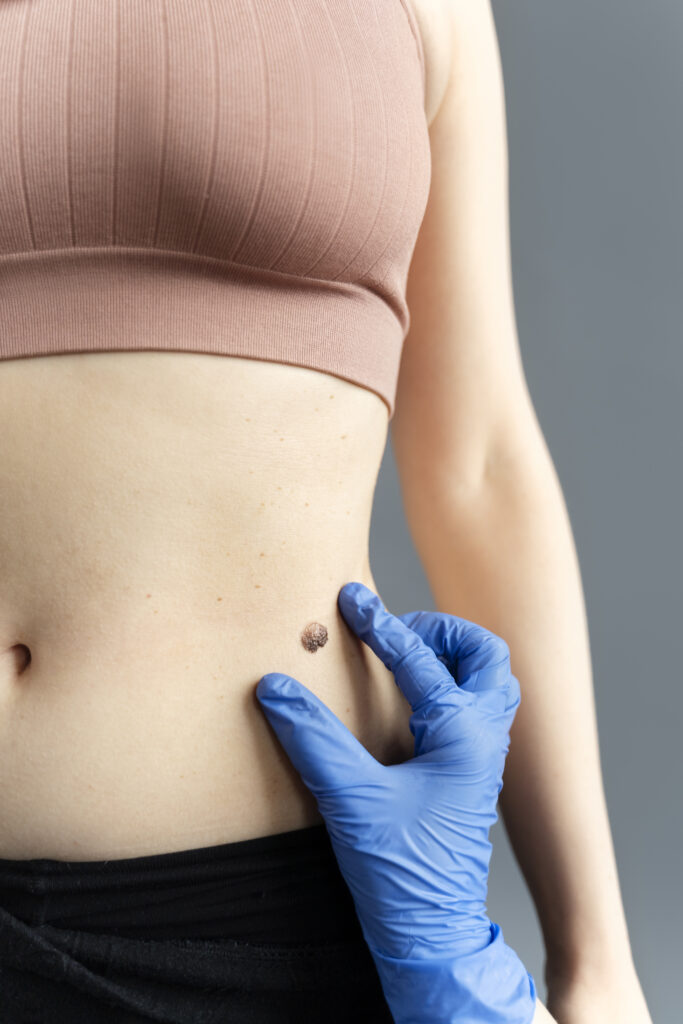
Things to Keep in Mind While Healing
While you should follow the proper steps, knowing what not to do is vital during aftercare. If you want healthy skin to heal well and avoid complications, avoid these mistakes.
1. Picking or Touching of the Wound
Do not try to remove healing tissue or scabs, no matter how appealing they appear to you. Consequently, it may result in scars, a prolonged recovery or infections. The golden rule is just to let things be.
2. Sunlight should be allowed into the area.
Too much UV radiation after a skin injury can lead to long-term spots on the skin. Do not forget to keep the area covered or apply a sunblock that your doctor recommends once the wound has healed.
3. Using Products That Hurt the Skin
Avoid using retinoids, exfoliants, acne creams, or similar products for at least 1–2 weeks after piercing. They may bother the healing area and hinder the body’s regrowth of tissues.
4. Sweating Heavily
Stay away from strenuous exercises, saunas and hot showers during the first few days. Sweating a lot allows bacteria to enter the body, and it takes longer for you to recover.
5. Wearing Clothes That Are Too Tight
If a cyst is taken out of an area that comes into contact with clothing — back, thighs or underarms- do not wear very tight or scratchy clothes. Select loose clothes and allow your skin to breathe.
Staying away from these triggers and habits allows your skin to heal effortlessly, with a lower chance of complications.
How to Minimise Scars After Having a Cyst Removed
Scarring occurs during healing, yet the proper cyst removal aftercare can help reduce scarring. Here are some actions that help your skin heal and likely avoid permanent marks:
1. Maintain hygiene and ensure it is well-moisturised.
After the wound heals, begin using a soft and fragrance-free moisturiser. Aloe vera, vitamin E and silicone gel added to creams can soften your skin and assist in smoother healing.
2. Stay out of the sunlight as much as possible.
Exposure to sunlight may darken scars and cause them to become worse. Add a broad-spectrum SPF 30 sunscreen to the area when the cyst is closed.
3. Keep away from itching or scratching.
Even though it’s tempting, you should resist picking at your scars as it can make them worse. Let the wound take its course to heal.
4. Be gentle while massaging the area.
Once your wound is completely closed and healed, rubbing a thin layer of moisturiser or scar cream can help soften the scar.
5. Try Treatments That Emphasise the Scar
If you easily scar, try using silicone scar sheets, scar gels or treatments suggested by your doctor. By using these daily, faded scars can be expected to reduce over time.
The scarring will be less noticeable if you care for your skin after the procedure.
Tips to Keep Scars Minimised and Help the Wound Heal After a Cyst Is Removed
Looking after your skin afterwards helps ensure that your skin looks smooth and prevents scarring. There is always some scarring after surgery, but there are methods that help to decrease its visibility.
Alternatively, you may use Silicone Gels or Scar Creams.
Among the most recommended ways to minimise scarring after cyst removal is to use silicone gel or a cream containing silicone. They are a barrier on your skin, helping it remain moist and balancing collagen production. According to your healthcare professional, silicone gel will gradually soften scars and reduce their visibility.
It is often found that getting silicone treatment only when the wound is fully healed leads to the best results. Let your practitioner tell you when and how to start using the products.
Using Sun Protection Factor (SPF)
If you stay in the sun right after getting a cyst removed, your scars may become darker and more noticeable. To keep the treated area safe, use broad-spectrum sunscreen with an SPF of at least 30.
After surgery on your face or neck, you can protect yourself in the sun by wearing hats, scarves and sunscreen.
Best Ways to Massage and Hydrate
Massaging the healed part of the skin gently may open up the blood vessels and increase its flexibility, which might decrease scar formation. They can demonstrate the proper method and how often you should start massaging the scar.
Adequate water intake improves your skin’s health and helps it heal. If you use moisturisers suggested by the clinic, the skin will be flexible and less prone to getting dry, helping to reduce scarring.
Staying away from irritating
While healing, do not apply chemicals that burn, rub the skin too hard or use tight clothing that may irritate the area. Choosing the proper clothing and using a gentle skincare routine will benefit your wounds and reduce the chances of scarring.
Following these tips for scar prevention and healing, your skin should recover and look its best. If you have concerns about how scars will heal, discussing them with your healthcare provider is important.
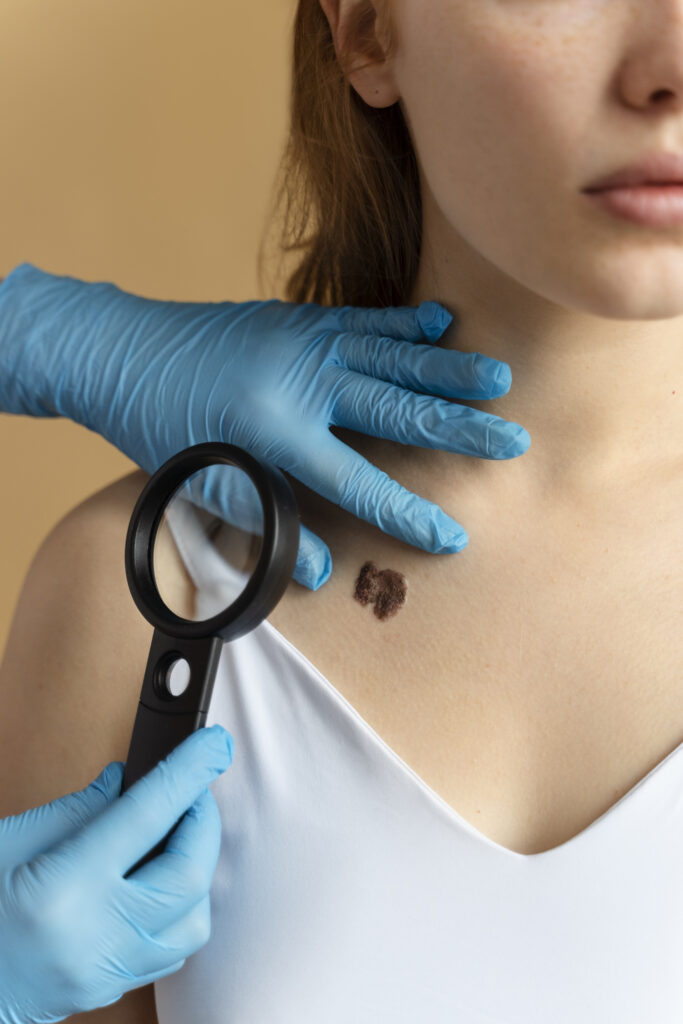
After the Removal of a Cyst: When You Need to See a Doctor
Although most cysts heal without problem, you should be aware of issues that might indicate there is a complication. If you notice these symptoms, report it immediately to prevent any issues from getting worse.
Spotting Infection
After removing a cyst, infection is a significant thing to remember. Watch for:
• Noticing that the area around the wound is swollen or red
• Tenderness that gets worse as time goes on
• There is pus or another kind of discharge present at the site
• Continued or increased pain
• Feeling cold or hot
Contact your doctor immediately if you observe any of these issues.
The wound takes longer to heal and is likely to become inflamed.
Sometimes the area is red and swollen at first, but if it remains red or the wound has not started healing after a week, this may be a sign of concern. If the wound suddenly starts bleeding or reopens, consult a doctor.
Allergic Reactions
Some people may experience itching, a rash or irritation after using a cream, dressing or medication during aftercare. Should you notice serious itching, blisters or discomfort, be sure to mention it to your practitioner so they can help you.
These are some additional issues to keep an eye on.
• Formation of hard lumps near the point of the rash
• Skin colour turning into something more than just a mild reddish shade
• Having a constant feeling of numbness or tingling at the site
They could indicate that scar tissue has developed or a nerve might be involved, so further examination is needed.
When should you call Revitalise London?
If you have any strange symptoms after your cyst removal, our team at Revitalise London advises you to get in touch as soon as possible. If you receive care soon after the accident, it is more likely that your healing will be smooth and you will avoid complications.
Remember to be observant and communicate with your doctor promptly during aftercare for cyst removal. Whenever you are uncertain about how you are recovering, reach out to a professional.
Here are some reasons to use Revitalise London for Cyst Removal Aftercare.
Pick a clinic that suits you well if you want the best care and results after cyst removal. At Revitalise London, we ensure your recovery is comfortable and easy by providing more than just the surgery.
A Specialist Team Just for You
Our staff of professionals trained in the UK understands that no two patients have same needs. Our aftercare plans are customised to your skin, the area where your cyst is and your daily activities. When surgery is tailored, it results in better scarring, less pain and a speedy recovery.
Up-To-Date Technology
Revitalise London applies the latest methods and skincare products to promote healing and avoid complications. To help you heal well, we provide quality silicone products, scar treatments and the guidance of our wound experts. We use a method that protects your skin, nourishes it and provides the best care throughout your recovery.
Full Assistance After Surgery
We ensure that you get the help you need after removing cysts. We ensure you understand what will happen, how to treat your wound, and what to note for complications. Moreover, we arrange follow-up visits to track your healing and address your concerns as soon as you need us. Having continuous support makes you feel comfortable and confident as you recover.
We make it a point to use easy techniques on the surrounding skin. Minimising the damage allows for a reduced risk of prominent scars. After we advise you on aftercare, you can expect your skin to be healthier and clearer.
All Skin Types Are Compatible
Revitalise London has dealt with various skin types and problems. We provide medical services that are secure and effective for even patients who have skin problems or difficult cysts. We always want you to feel safe and comfortable.
If you opt for Revitalise London, you will receive care that looks after your well-being, from cyst removal to recovery. The experts here are ready to guide you and give you personalised care to achieve the best outcome.
If you’re about to undergo cyst removal or need aftercare tips, you can contact Revitalise London for help.
Conclusion: Healing with Confidence After the Procedure
To ensure a smooth healing process, it is essential to look after the area where the cyst was removed. Following a doctor’s advice can avoid problems such as infection, scarring and delayed healing. You can depend on Revitalise London for personal support and guidance throughout your recovery. If you are preparing for treatment or recovering, we will do our best to ensure you feel secure and at ease. To provide a good recovery after cyst removal, put your trust in Revitalise London, your companion in skin health.













